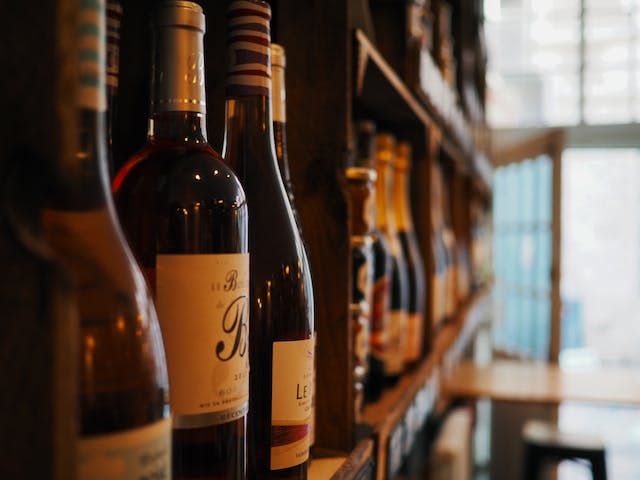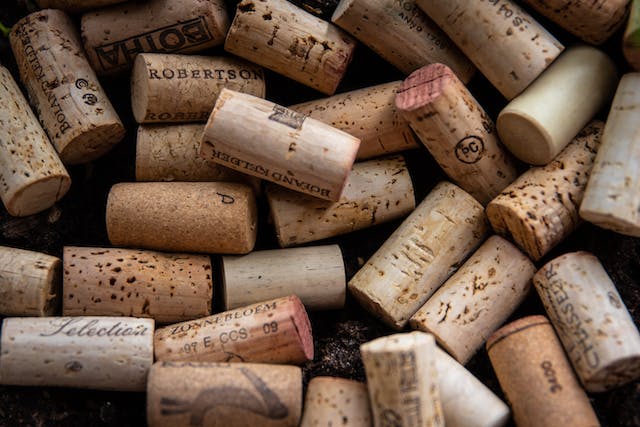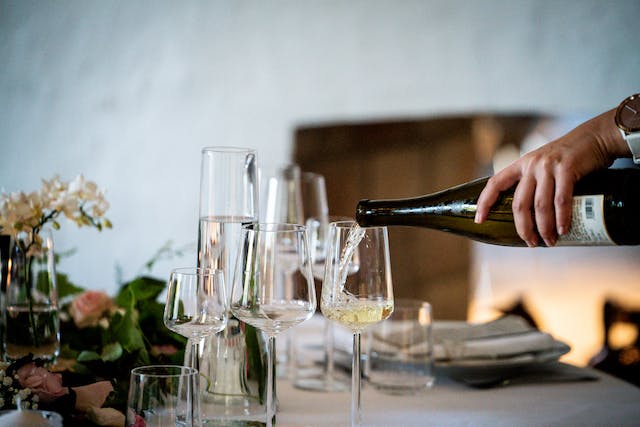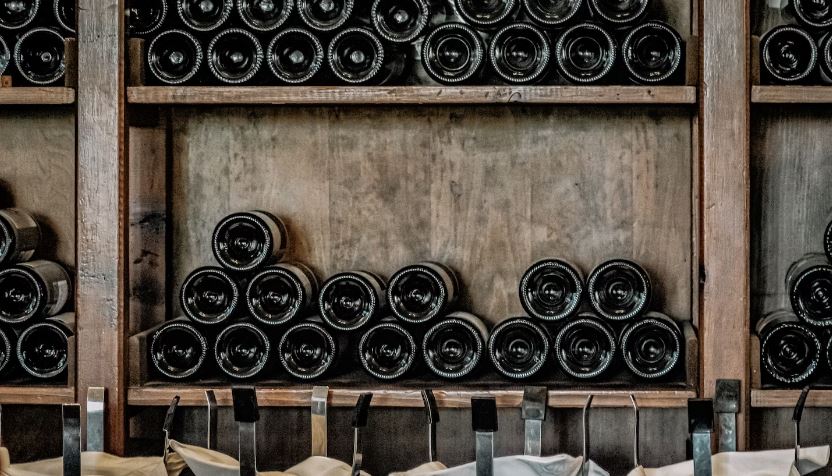Introduction
Wine, with its rich tapestry of flavors and aromas, is a beverage that has captivated humanity for centuries.
For wine enthusiasts and collectors, proper storage is a fundamental aspect of nurturing and preserving the exquisite qualities of their cherished bottles. Central to this discussion is the age-old question, should wine bottles be stored upright or on their sides? The answer, as you shall explore, lies at the intersection of tradition, science, and the unique characteristics of the wine in question.
In this guide, embark on a journey through the fascinating world of wine storage, uncovering the wisdom behind each choice – whether to lay the bottle down or let it stand tall. As you delve into this age-old debate, consider the role of cork closures, the effects of aging, exceptions to the rule, and the vital importance of temperature and humidity. Whether you’re a seasoned oenophile or a newcomer to the world of wine, understanding the nuances of upright and horizontal storage will undoubtedly enhance your appreciation of this timeless elixir.
When it comes to wine, proper storage is key to preserving its flavors and ensuring it ages gracefully. Among the many questions that wine enthusiasts face, one of the most common is whether to store bottles of wine upright or on their sides. The answer, as it turns out, isn’t a one-size-fits-all solution. The decision largely depends on the type of wine and how long you plan to store it.
The Cork Connection
When it comes to wine storage, the humble cork plays a starring role. Often overlooked, this small but essential component of the wine bottle closure can significantly influence the quality and longevity of the wine it protects. Understanding the intricacies of the cork connection is key to making informed decisions about whether to store wine bottles upright or on their sides.
The debate surrounding wine storage orientation often centers around the cork. Traditional cork closures have been used for centuries and remain a popular choice for sealing wine bottles. Cork has unique properties that make it an excellent closure, but it also requires special attention when it comes to storage.
The Role of the Cork
Cork has been the preferred choice for sealing wine bottles for centuries, and for good reason. This natural material, harvested from the bark of cork oak trees, possesses several unique properties that make it ideal for wine closures:
Flexibility. Cork is exceptionally malleable, allowing it to form a snug seal within the bottleneck. This tight seal prevents air from entering the bottle and wine from escaping.
Micro-Porous. Cork is permeable on a microscopic level. It allows for a tiny amount of oxygen to interact with the wine, promoting slow, controlled aging.
Sealing Ability. Cork expands and contracts in response to temperature and humidity fluctuations, maintaining an airtight seal even under changing conditions.
The cork connection in wine storage is a vital consideration. Whether you choose to store your wine bottles upright or horizontally depends on the type of wine, your storage intentions, and the closure used. By understanding the role of cork and its impact on wine quality, you can make informed decisions that ensure your treasured bottles age gracefully and deliver exceptional flavors when the time is right to uncork them.
Laying Down: Long-Term Benefits
When it comes to aging and preserving wine, the age-old practice of laying bottles down horizontally has proven its worth over centuries. This method, while rooted in tradition, is far from a mere convention; it offers several substantial long-term benefits for wine enthusiasts and collectors alike.
Cork Preservation: The Key to Freshness
The most compelling reason for horizontal wine storage is cork preservation. Natural corks, used as bottle closures, have a unique set of characteristics, one of which is their tendency to dry out if exposed to air for extended periods. When corks dry out, they shrink and may lose their elasticity, creating gaps that allow air to infiltrate the bottle. This unwelcome intrusion can lead to oxidation, spoilage, and a disappointing wine-drinking experience.
By laying bottles horizontally, the wine remains in constant contact with the cork. This contact ensures that the cork stays moist, preventing it from drying and maintaining its sealing integrity. It’s a bit like giving the cork a regular drink, ensuring it stays swollen and firmly in place. This preservation of the cork’s quality is especially crucial for wines intended for long-term aging.
Slow and Steady Aging: Enhancing Complexity
Horizontal storage not only safeguards the cork but also promotes the slow, controlled aging of the wine itself. When a bottle is on its side, a small amount of oxygen interacts with the wine through the cork. This controlled oxygen exposure encourages subtle chemical reactions within the wine, resulting in a more complex flavor profile and the development of desirable tertiary aromas.
Red wines, in particular, benefit from this gradual aging process. Tannins soften, and the wine’s various components integrate harmoniously, leading to a smoother, more refined taste. The result is a wine that evolves gracefully, offering layers of flavor and nuance over time.
Preventing Sediment Disturbance
Another advantage of laying bottles down is that it helps to minimize the disturbance of sediment. Over time, some wines, especially older red wines and vintage Ports, can develop sediment. Sediment is composed of tannins and other solids that naturally precipitate out of the wine as it ages. When the bottle is stored horizontally, the sediment settles along the side of the bottle, away from the neck. This makes it easier to pour the wine without disturbing the sediment when you decide to enjoy it.
Hence, laying wine bottles down horizontally offers several long-term benefits for wine storage enthusiasts:
- Cork Preservation. Maintains the integrity of the cork, preventing it from drying out and allowing unwanted air ingress.
- Controlled Aging. Encourages gradual, controlled aging, enhancing wine complexity and flavor development, especially in red wines.
- Sediment Management. Minimizes disturbance of sediment in wines that naturally develop sediment over time.
Whether you are a collector looking to age wines for several years or simply wish to ensure your bottles remain in peak condition, horizontal storage is a time-tested method that can help you unlock the full potential of your favorite wines, making each bottle a delightful journey of discovery.
Exceptions to the Rule
While storing wine on its side is a good rule of thumb for most situations, there are exceptions:
- Alternative Closures
Wines sealed with screw caps or synthetic corks don’t require sideways storage because these closures are not susceptible to cork drying or contamination. However, storing them on their sides won’t harm them either.
- Short-Term Storage
If you intend to consume a bottle of wine within a few weeks or months, whether it’s red or white, upright storage is perfectly acceptable. Many wines are produced to be enjoyed young and fresh, and their aging process has already been taken into account by the winemaker.
- Sparkling Wines
Sparkling wines like Champagne should always be stored upright. The carbonation in these wines can push against the cork and potentially cause it to pop if stored on its side.
Temperature and Humidity Matter
While the debate between upright and horizontal wine storage is essential, there are other critical factors that can profoundly influence a wine’s aging and quality. Among these, temperature and humidity emerge as two of the most pivotal considerations. Like a symphony conductor directing a masterful performance, maintaining the right temperature and humidity levels can orchestrate the perfect environment for your wines to mature gracefully.
Temperature: The Maestro of Wine Storage
Temperature is perhaps the most critical factor in wine storage. It can make or break the delicate dance of chemical reactions occurring within the bottle. Here’s why temperature matters:
Temperature Consistency
Fluctuations in temperature can lead to the expansion and contraction of the wine, potentially allowing oxygen to seep through the cork. Ideally, wine should be stored at a consistent temperature, with minimal variation, typically between 50°F and 59°F (10°C and 15°C). This range helps maintain the wine’s stability.
Aging Potential
The rate of aging accelerates with higher temperatures. At excessively high temperatures (above 68°F or 20°C), wine may age too quickly, losing its balance and becoming overly alcoholic and flat. Conversely, overly cold temperatures can slow down aging to a point where the wine may not develop desirable characteristics.
Wine Type Matters
Different types of wine have specific ideal storage temperatures. Red wines typically benefit from slightly warmer storage conditions (around 55°F or 13°C), while white wines, particularly delicate and crisp varieties, may prefer cooler temperatures (around 50°F or 10°C).
Humidity: Preserving Corks and Labels
Humidity is the often-overlooked partner in the wine storage symphony. Here’s how it plays its part:
- Cork Preservation. Just as it prevents cork drying, adequate humidity (ideally between 55% and 75%) ensures that the cork remains supple and maintains its seal. A dry cork can shrink and become less effective, potentially allowing air infiltration.
- Label Integrity. Maintaining appropriate humidity levels helps preserve wine labels. For collectors, these labels are often as valuable as the wine itself, and damage due to mold or drying can diminish their aesthetic and historical value.
- Mold Control. While some humidity is essential, too much can promote mold growth on corks and labels. Maintaining the right balance is crucial.
- Preventing Oxidation. Proper humidity can also help prevent the wine inside the bottle from evaporating through the cork. If the cork dries out too much, it can allow wine to escape, leading to a phenomenon known as “ullage.”
Maintaining the ideal temperature and humidity conditions for your wine storage area is essential, regardless of whether you choose to store bottles upright or on their sides. By paying attention to these factors, you can help your wines reach their full potential, providing you with the best possible tasting experience when you eventually decide to uncork and enjoy them.
Conclusion
The decision of whether to store wine bottles upright or on their sides isn’t a matter of personal preference, it’s about ensuring that your wine ages gracefully and maintains its quality.
To summarize, long-term storage, especially for wines with traditional cork closures, is best done on their sides to keep the cork moist and prevent oxidation. Short-term storage or wines with alternative closures can be stored upright without issue. Always maintain proper temperature and humidity conditions in your wine storage area, regardless of storage orientation.
Ultimately, the choice comes down to the type of wine and your storage intentions. Whether you’re a seasoned collector or just enjoy the occasional bottle, knowing how to properly store your wine will help you savor its flavors to the fullest. So, to lay or not to lay? It all depends on the bottle in your hand and your plans for it.



